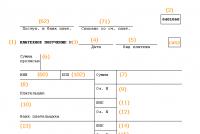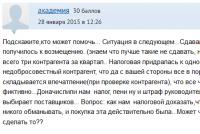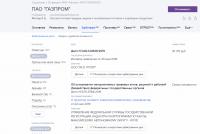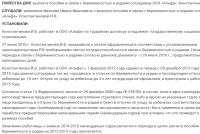Accounting for the receipt of fixed assets. Fixed assets: postings. Accounting. Retirement transactions for low-value fixed assets
Every company of any size and profile cannot do without production means - be it buildings, machines, cars or trade, refrigeration, exhibition equipment. The range of fixed assets used in heavy and light industry, trade, transport is unusually large; therefore, their accounting and correct drafting Asset postings are the primary task of an accountant.
Signs of property falling under the definition of a fixed asset for accounting and tax accounting, are set out in Article 257 of the Tax Code of the Russian Federation and paragraph 4 of PBU 6/01.
Starting from 01.01.2016 the main ones include means of labor worth more than 100 thousand rubles. The cost of OS, taken into operation earlier on the indicated date, started from 40 thousand rubles.
All actions with fixed assets, including their receipt (manufacturing), installation, commissioning, movement, disposal are documented:
Forms of primary documents for fixed assets accounting were approved by the State Statistics Committee of the Russian Federation No. 7 dated January 21, 2003, however, since 2013. companies have the right to approve and use their forms of documents in compliance with the requirements for the availability of basic details.
The use of fixed assets involves their operation for a period of more than 12 months. During the period of use of the fixed asset, depreciation is charged - that is, part of the cost of the fixed asset, which it transfers in the same period to the products produced with its use. Depreciation serves as a source of replenishment for the company's assets and is calculated taking into account the useful life of the asset. The terms of use of various categories of fixed assets are approved by the Classifier (Decree of the Government of the Russian Federation of 01.01.2002).
We put on the OS balance
To accept a fixed asset for accounting, it is necessary to determine its initial cost. It includes, in addition to the direct costs of purchasing / manufacturing the OS, the cost of transportation, installation and commissioning, customs duties and state duties and other costs directly related to the object. VAT is not included in the original cost.
The listed costs are taken into account in the debit account 08, thus forming the initial cost of the object. Then, based on the order of the head, the OS is put into operation by wiring Dt 01 Kt 08... It is more rational to determine the date of commissioning by the readiness of the facility for operation, which must be approved in accounting policy.
Fixed asset transactions upon receipt:
We depreciate the OS
In the rules accounting there are four methods of depreciation, and the tax code provides for only two: linear and non-linear. To avoid confusion between tax and accounting, companies generally use one of two things. In this case, the chosen method covers all objects of the OS, but it can be changed during the period of operation.
Get 267 1C video tutorials for free:
Whichever method the company prefers, the accountant will reflect the depreciation of the fixed assets as follows:
- Dt 20 (23,25,26,29,44) Kt 02 - depreciation accrued
The depreciation amount per month is determined as the result of dividing the annual amount calculated according to the chosen method by 12 months; is drawn up by an accounting statement-calculation.
It is necessary to charge depreciation on newly introduced objects from the 1st day of the month following the month of commissioning; for retired objects, the accrual is stopped from the 1st day of the month following the month of retirement. V balance sheet reflect residual value OS.
Different ways to get OS
In the real activities of companies, there are often cases of receiving fixed assets in the form of a contribution to authorized capital, under a barter agreement, free of charge:

Account entries will be as follows:
- Fixed asset transactions when contributing to the share capital:
- Fixed asset transactions when received free of charge:
- Fixed asset transactions upon receipt under an exchange agreement (offset):
| Dt | CT | Description | A document base |
| 08 | 60 | Debt for fixed assets is reflected | Agreement (offset protocol), consignment note |
| 19 | 60 | Reflected VAT | Invoice received |
| 01 | 08 | OS object taken into account | Act OS-1 (a, b) |
| 62 | 90.1(91.1) | Reflected the supplier's debt for services or goods and materials (under an exchange agreement) | Agreement, consignment note (act of services rendered) |
| 60 | 62 | Reflected exchange (offset) | Accounting information |
| 68.2 | 19 | VAT deducted |
We reassess the OS
The organization can approve in the accounting policy its right to conduct an annual revaluation of fixed assets. It is carried out in relation to all homogeneous objects of the OS. As a result, the cost of objects may increase or decrease:

The revaluation results are included in additional capital, the accountant will reflect this as follows:
- Dt 01 Kt 83 - the amount of the revaluation of fixed assets is reflected;
- Dt 83 Kt 02 - depreciation has been adjusted.
The results of the devaluation are charged to other expenses:
- Дт 91.2 Кт 01 - the amount of the depreciation of fixed assets is reflected;
- Dt 02 Kt 91.1 - depreciation has been adjusted.
After the revaluation has been carried out, depreciation is calculated on the basis of replacement cost rather than original value.
Reflecting the disposal of the OS
Upon reaching depreciation or in connection with the sale, the asset object is subject to write-off. The disposal of the OS is formalized by the OS-4 (a, b) act, signed by the commission. An appropriate entry is made in the inventory card of the object and the fact of disposal is reflected in the accounting:
- Fixed asset transactions on depreciation write-off:
- Fixed asset transactions when write-off for sale:
| Dt | CT | Description | A document base |
| 01selected | 01 | Original cost written off | OS-1 act, contract |
| 02 | 01 select | Depreciation written off | |
| 91.2 | 01 select | Residual value written off | |
| 62 | 91.1 | Reflected revenue | Contract, consignment note |
| 91.2 | 68.2 | Reflected VAT | Invoice issued |
For tax purposes, income / expenses from the sale of fixed assets are included in the list of non-operating expenses.
The activity of a business entity involves the use of property with a long time of use in the production process. Since such accounting objects have a long time of use and a significant price, there are some features of their reflection both in accounting and in tax accounting. Let's take a closer look at how fixed assets are indicated in accounting and tax accounting in 2018.
Fixed assets are property owned by the company or attracted by it from the outside, which is used in its production activities for more than one year and has a value above the border established by regulatory enactments.
There are criteria by which there is a distinction between fixed assets and other property.
How the OS can take into account objects:
- Usage time over 12 months.
- Such property is used by the company during its activities for production, provision of services, performance of work, or for the purpose of managing the enterprise.
- It is bought for use, not for sale.
- Its application will allow the organization to generate income.
It follows from this that as the OS take into account buildings, structures, vehicles, equipment, etc.
The leading normative act governing the accounting of fixed assets in Russia is PBU No. 6/01. V the said document the indicators of attribution to fixed assets are determined, as well as the accounting methodology.
Attention! Among the above-mentioned features of the OS, one more important criterion is not indicated - its price. According to PBU, property, the purchase price of which is set from 40,000 rubles, must be classified as fixed assets. For tax accounting, as indicated in the Tax Code of the Russian Federation, the price of an object that will be used as an asset must be from 100,000 rubles.
Types of fixed assets
Since OS objects are diverse, it is easiest to classify them into different groups. This division is important, since, according to the established norms, there are some peculiarities of accounting and transferring the price of an object to the final product of the company's activity.
There are such operating systems:
- Building.
- Structures (temporary buildings, bridges, etc.).
- Transfer devices.
- Cars and equipment.
- Vehicles.
- Instruments.
- Inventory and accessories.
- Others (not included in any of the above groups)
In addition, the OS can be divided into production facilities and non-production, based on their purpose. By belonging - they are own and rented.
Attention! Other divisions of fixed assets can also be applied - according to the degree of action in the production process, according to the time of application, according to the transfer of the price to the final product, etc.
What has changed in 2019
The government has introduced the following changes since 2019:
- Starting from January 1, 2019, some changes were made to the Tax Code of the Russian Federation Art. 259.3, paragraph 1 - expanded the list of equipment operated under the conditions of the best available technologies. This equipment is depreciated at a multiplier of two.
- A new list of equipment for accelerated depreciation was approved in accordance with Government Decree No. 622-r ri on 04/07/2018.
Attention! Now 583 items of equipment fall under accelerated depreciation, i.e. now there are 2 times more positions than before (there were 246).
Fixed assets in 2018 - major changes
It was expected that from the beginning of the year there will be significant changes in the accounting of fixed assets. But new regulations were never adopted. Therefore, the old rules continue to apply to a significant number of OS objects.
However, there are also some innovations, which, for the most part, affected small business entities that carry out accounting according to a simplified scheme.
Such entities received the right to create the initial cost of fixed assets based on the amounts of payments to suppliers and contractors assembling this object. If the OS was created in the organization itself, then its price is formed from the amounts paid to contractors and other organizations. All other amounts spent can be transferred to current expenses.
Important! The organization has the right to depreciate fixed assets in the simplified mode once a year on the last day of the year.
Also, business entities with simplified accounting schemes received the right to immediately depreciate at full price the fixed assets related to inventory (they have a low price and a short service life). Such measures allow such entities to reduce the burden when calculating property tax.
Anna Gorokhova, Leading Expert Methodologist at BDO UniconOutsourcing
Changes in the accounting of fixed assets in 2017 are associated with the introduction of a new All-Russian classifier of fixed assets OK 013-2014 (SNA 2008). Amendments were also made to the Resolution of the Government of the Russian Federation dated 01.01.2002 No. 1, which approved the Classification of Fixed Assets for Tax Accounting Purposes (Decree of the Government of the Russian Federation dated 07.07.2016 No. 640). In some cases, the amendments will affect the definition of the useful life of the newly acquired property.
As a reminder, for tax accounting purposes, from January 1, 2016, property with a useful life of more than 12 months and an initial cost of more than 100,000 rubles is recognized as depreciable. The new limit is valid for properties put into operation since 2016. In accounting, the same limit remained - 40,000 rubles.
Depreciable property is divided into depreciation groups in accordance with its useful life (SPI) (clause 1 of article 258 of the Tax Code of the Russian Federation).
From January 1, 2017, organizations will also determine the amortization period for fixed assets according to the new Classifier of fixed assets OK 013-2014 (SNA 2008) (approved by order of Rosstandart dated 12.12.2014 No. 2018-st).
The old Classifier of fixed assets OK 013-94, by which one of the ten groups of depreciable property was determined, will be canceled.
In the new Classifier of fixed assets, the codes of objects of fixed assets have completely changed: their numbering has changed. The names of the objects have also partly changed. In this regard, the Decree of the Government of the Russian Federation (Decree of the Government of the Russian Federation of 01.01.2002 No. 1 (hereinafter referred to as Decree No. 1)), which approved the Classification of Fixed Assets for Tax Accounting Purposes, was amended (Decree of the Government of the Russian Federation of 07.07.2016 No. 640). These changes also come into force on January 1, 2017.
Classifier of fixed assets and transition keys
In order to simplify the transition to the new Classifier of Fixed Assets, Rosstandart issued an order "On the approval of direct and reverse transition keys between editions of OK 013-94 and OK 013-2014 (SNA 2008) of the All-Russian Classifier of Fixed Assets" (Rosstandart order dated April 21, 2016 No. 458), in which tables of correspondence between old and new OKOF codes are given (the direct transition key sets the transition from OK 013-94 to OK 013-2014 (SNA 2008), and the reverse transition key, on the contrary, the transition from OK 013-2014 (SNA 2008 ) to OK 013-94).
Most of the objects have the same name, only the code number and the name of the subgroup have changed.
For example, according to the new Classification, the 2nd depreciation group (with a useful life of more than two years and up to three years inclusive) will include computers (the subgroup "Other office machines" with code 330.28.23.23 includes: personal computers and printing devices for them ; servers of various capacities; network equipment of local area networks; data storage systems; modems for local area networks; modems for backbone networks).
According to the current (old) Classifier, this subgroup (which includes personal computers and printing devices for them, servers of various capacities, network equipment of local computer networks, data storage systems, modems for local networks, modems for backbone networks) also belongs to 2- nd depreciation group with a useful life of more than two years and up to three years inclusive. But it is called "Electronic Engineering" and has the code 14 3020000.
In some cases, specific types of fixed assets are absent in the Classifier of fixed assets OK 013-2014, and then compliance should be established based on the characteristics of similar or similar objects.
The Classifier of Fixed Assets OK 013-2014 (SNA 2008) defines fixed assets. These are manufactured assets that are used repeatedly or continuously over a long period of time, but not less than one year, to produce goods and provide services. Some of the positions of the current OK 013-94 do not correspond to the new definition of fixed assets. For them, in the column "Position name" of the correspondence table, an entry was made: "They are not fixed assets".
For example, microphones, loudspeakers, headphones, headsets with code 14 3230200, microphones with code 14 3230201, loudspeakers with code 14 3230202, drilling perforators, slotted with code 14 3315443, equipment of line equipment rooms, amplifiers and low-frequency stands with code 14 3222400 now are not fixed assets.
The accountant uses the codes of the Classifier of fixed assets when filling out the federal statistical observation form No. 11 "Information on the availability and movement of fixed assets (funds) and other non-financial assets". Also, in some cases, the definition of the right to use the UTII system may depend on the OKOF code.
But above all All-Russian classifier fixed assets is used to determine the rate of depreciation of fixed assets in tax accounting, since in accordance with Tax Code taxpayers in determining depreciation group, which should include depreciable property, must use the Classification of fixed assets approved by Resolution No. 1. And this Classification, in turn, is based on the OKOF classifier.
Classifier of fixed assets to determine the depreciation group and SPI
Useful life is the period (number of months) during which the company expects to use the fixed asset and receive economic benefits from it. Depending on this period in tax accounting they are assigned to one or another depreciation group.
Accepting an object for accounting, each organization independently establishes a SPI as of the date of its commissioning. But before you set the SPI for the acquired fixed asset, you need to determine which of the ten depreciation groups the object belongs to.
There is a minimum and maximum set for each group. An organization can select a PIE within a specific depreciation group in which the asset is included.
If the fixed asset belongs to the type that is not named in the Classification approved by the Government of the Russian Federation, then for such an object the SPI should be established on the basis of technical documentation or manufacturer's recommendations. If, however, there is no PIE in the technical documentation, the organization can use the data from the Classifier of Fixed Assets. The fixed asset code must be found in OKOF and the depreciation group must be determined according to this code (the ranges of codes in the Classifier are given in addition to the names of fixed assets in the explanatory column).
Application of the Classifier of Fixed Assets in Accounting
Resolution No. 1, approving the Classification of Fixed Assets for tax accounting purposes from 2017, states that the Classification should be applied for tax accounting purposes. The provision that the Classification can also be used for accounting purposes has been excluded from the text of this resolution. This is quite natural, since tax legislation should not regulate accounting issues. But does this mean that the Tax Classification can no longer be applied in accounting?
The useful life in accounting is the period during which an item of property, plant and equipment must bring economic benefits to the organization, that is, income. In accordance with PBU 6/01 "Accounting for fixed assets" (approved by order of the Ministry of Finance of Russia dated March 30, 2001 No. 26n), the SPI of an object of fixed assets is determined based on:
the expected life of this item in accordance with the expected performance or capacity;
expected physical deterioration, depending on the operating mode (number of shifts), natural conditions and the influence of an aggressive environment, the repair system;
regulatory and other restrictions on the use of this property (for example, the lease term).
Thus, in accounting, an organization can independently determine the PIE, without relying on any norms or classifiers.
There is no prohibition on the use of the Classifier of Fixed Assets established for tax purposes in accounting. Most companies use this Classification for accounting purposes, fixing this procedure in the accounting policies of the organization. This option is chosen to optimize accounting work, approximate accounting and tax accounting (including with the aim of avoiding the need to apply temporary differences).
SPI of fixed assets that were in operation
The new codes and the new Classification will apply to property, plant and equipment acquired after 1 January 2017. But how to determine the STI if the organization in 2017 has registered fixed assets that were in operation?
Recall that the company has the right to independently establish in tax accounting the procedure for determining the SPI for such items of fixed assets, while it is possible to proceed from the term, which (clause 7 of article 258 of the Tax Code of the Russian Federation):
1) determined by the Classification (that is, as a new object);
2) determined by the Classification, but reduced by the period of actual use by the previous owner (the life of the fixed asset by the previous owner must be documented, for example, by an act in the OS-1 form);
3) established by the previous owner and reduced by the period of its actual use by this owner (these periods must also be documented).
These options are provided for companies using the straight-line depreciation method. When using the non-linear method, the depreciation calculation does not depend on the useful life of the asset.
In the first two cases, in 2017, organizations will have to apply the new Classification (of course, this only matters if the object's STI in accordance with new Classification changed).
If the period of actual use of the fixed asset by the previous owner turns out to be equal to the period determined in accordance with the Classification, or exceeding this period, the company has the right to independently establish a SPI, taking into account safety requirements and other factors.
Application of the Classifier of Fixed Assets when changing the SPI
By general rule The STI is revised when there has been an improvement in the originally established normative indicators the functioning of the facility as a result of completion, retrofitting, reconstruction, modernization.
Recall that in tax accounting, an increase in SPI can be made only within the time limits established for the depreciation group in which the fixed asset was previously included. If the useful life after reconstruction, modernization or technical re-equipment has been increased, the organization has the right to charge depreciation at a new rate calculated based on the new useful life of the fixed asset (letter of the Ministry of Finance of Russia dated 04.08.2016 No. 03-03-06 / 1 / 45862). But such a recalculation of the depreciation rate will lead to the fact that the object will be depreciated longer, therefore, for an organization in this case it is more profitable to charge depreciation according to the previous rates.
If, after the modernization (reconstruction), the initial cost of the object has changed, and the SPI remains the same, then the depreciation rate when using the straight-line method in tax accounting cannot be revised, and at the end of the SPI the fixed asset will not be fully depreciated. However, according to the explanations of the Ministry of Finance of Russia, organizations in this case are allowed to continue to charge depreciation. linear method before full repayment the cost of the fixed asset and after the end of the SPI, if it was not revised after the modernization (reconstruction) of the fixed asset (letters of the Ministry of Finance of Russia dated 05.07.2011 No. 03-03-06 / 1/402, dated 10.09.2009 No. 03-03-06 / 2 / 167, dated 12.02.2009 No. 03-03-06 / 1/57).
When, after modernization (reconstruction), the technical characteristics of the object have changed so much that it began to comply with the new OKOF code (in 2017, old and new codes will have to be analyzed), the object should be considered as a new fixed asset. In this case, its initial cost and SPI will need to be determined anew using the new Classifier.
And in accounting, the SPI is an estimated value. Therefore, the organization has the opportunity, without taking into account any norms, to change (clarify) the PIE in such cases as, for example, modernization or reconstruction, reflecting such an adjustment in accounting and reporting. At the same time, the possibility of revising the SPI as an estimated value must be consolidated in the accounting policy of the organization.
Question
Tell me please. Purchased fixed assets in the amount of 43,000. How to correctly draw up paperwork and transactions?
Answer
The cost limit is one of the conditions for recognizing an object as a fixed asset.
An object is accounted for as an asset if its initial cost:
- in accounting - more than the limit established by the accounting accounting policies... This limit cannot exceed 40,000 rubles. (Clause 5 PBU 6/01, Letter of the Ministry of Finance dated February 17, 2016 N 03-03-07 / 8700). For example, an accounting policy may set a limit of RUB 30,000;
- in tax accounting both for DOS and STS - more than 100,000 rubles. (clause 1 of article 256, clause 1 of article 257, clause 4 of article 346.16 of the Tax Code of the Russian Federation).
Property that does not meet all these requirements is not accounted for and is not depreciated as part of fixed assets. The cost of such property in accounting or tax accounting, respectively, is taken into account in the costs when it is transferred into operation.
A situation is possible when the useful life of the property is more than 12 months, but its cost:
- or in accounting is 40,000 rubles. and less (less than the limit for recognizing assets as fixed assets established by the accounting policy);
- or in tax accounting is 100,000 rubles. and less.
The cost of such property in accounting or tax accounting, respectively, can be taken into account in expenses at the same time when transferring it into operation or evenly during its useful life at the option of the organization. The chosen method of accounting must be fixed in the accounting policy (subparagraph 3 of paragraph 1 of article 254 of the Tax Code of the Russian Federation, paragraph 5 of PBU 6/01, Letter of the Ministry of Finance dated 20.05.2016 N 03-03-06 / 1/29124).
The postings will be like this.
- D 08 - K 60 (02, 10, 70, 69) - Costs for the acquisition (construction) of fixed assets to be included in its initial cost are taken into account
- D 01 - K 08 - OS accepted for accounting
- D 19 - K 60 - Reflected "input" VAT on the cost of purchasing fixed assets
- D 68 - K 19 - VAT accepted for deduction
In accounting when accepting fixed assets for accounting (posting D 01 "Fixed assets" - K 08 "Investments in fixed assets") An act is drawn up in form N OS-1 and an inventory card (form N OS-6) (clause 38 Methodical instructions for OS accounting). To start the accrual of depreciation on fixed assets in accounting, this is enough, the fact of putting the object into operation in this case does not matter (clause 21 of PBU 6/01).
Related questions:
-
Please tell me if it is possible in tax accounting a fixed asset with a value of less than 100,000 to register as a fixed asset. To bring tax and Accounting
✒ And in accounting, and ... ... -
How to take into account exchange rate differences, if the obligations are in dollars at the exchange rate on the date of the order of the goods, do I need to recalculate for each reporting date if the item has not been paid for yet?
✒ Coursework ... ... -
Good day! STS (income minus expenses). We purchased two air conditioners (the cost of one is 40,000 =), installation is 30,000 =. How to register?
✒ Because the cost of the equipment forms the initial cost of the fixed asset along with the costs ... ... -
How to correctly reflect design work (150,000 rubles) and installation in accounting fire alarm(844800 rubles) in the office of the company
✒ Design work Development costs project documentation on construction ... ...
Accounting for fixed assets in 2017 is carried out according to the new rules. In accounting, it is no longer possible to establish the useful life according to tax classification. But the dates may coincide.
Fixed assets can enter the company upon purchase, as a gift, in the form of a contribution to the authorized capital, and so on. In this article, we settled on the first option.
Read the puzzle first - it is listed below. Flip through the Chart of Accounts and ponder. Then make up accounting entries and write them into the register - memorial warrant.
Finally, read the explanations in the article and check the solution at the end of the article.
The task of accounting for fixed assets in 2017 (in accounting)
LLC Noris purchased a woodworking machine for the production of furniture for 531,000 rubles. (including VAT - 81,000 rubles). The machine was delivered by a transport company on the day of purchase, the cost of its services is 17,700 rubles. (including VAT - RUB 2700). The machine was put into operation on the same day. Source documents and invoices confirming the purchase and delivery costs are presented to the accounting department.
Your task, as an accountant of Noris LLC, is to determine the initial cost of the machine, as well as to make entries for its acceptance for accounting. For the sake of simplicity, let's assume that the supplier and the shipping company have not yet been settled. LLC Noris is a VAT payer.
How to find out fixed assets to reflect in accounting
On account 01, all fixed assets of the company are taken into account. But in order to put them on this score, they often have to visit other accounts and wait for their initial value to be formed. But first things first.
Every business has things that people work with - machines, machines, buildings, computers, and more. This group of things is called the TOOLS of labor. It's easy to remember this way. The means of labor form environment enterprises. This is what they work AMONG. And the way they affect the objects of labor (materials).
For accounting purposes, the means of labor are called fixed assets. They retain their natural shape throughout their entire service life. By the way, hence their English name - fixed assets.
In accounting, it is important to distinguish between means of labor and objects of labor. That is, what helps people to work, and what they work on. The machines, conveyors on which the products are manufactured are the main assets. And the nails, the cement from which it is made are materials. They are taken into account differently than the means of labor.
You probably already guessed that the main difference is in the service life. More precisely, in terms of useful life, this is a more correct term. If this period exceeds 12 months, the property can be classified as fixed assets. True, subject to other important conditions.
Useful life is the period during which the fixed asset works at the enterprise, that is, it performs its functions. Do not confuse with shelf life.
Let's say you purchased pens for accounting. You can store them in the warehouse for more than a year. But as soon as you start using them, they very soon fail and stop helping in your work. Therefore, they are not classified as fixed assets.
Another thing is a car or a production machine. Its term of use is clearly more than a year. This means that before us is nothing more than a basic means.
Important!
From January 1, 2017, the useful life of fixed assets is determined according to the rules of paragraph 20 of PBU 6/01. In this case, the period for accounting may coincide with the tax
By the way, it happens that the equipment consists of several parts. And each has its own useful life. Let's take a computer assembled from a system unit, a monitor, and so on. Having received the documents for it, the accountant must answer the question: is the difference in the service life of the components significant? If the answer is yes, each part can be counted separately. And if negative, all parts are combined into one fixed asset. What difference is considered significant, and what is not, is prescribed in the accounting policy.
The initial cost of the fixed asset in accounting
The initial cost is only for fixed assets. This concept is not applied to goods, materials and other values. This is due to the fact that fixed assets are a special type of property. They serve for a long time, so they are not written off to expenses immediately, but gradually, in parts. The difference between the original cost and these parts is the residual value.
Now look at the problem statement and imagine yourself as an accountant of Noris LLC. You are holding in your hands the documents for the purchase of a woodworking machine. Its cost is 531,000 rubles. (including VAT - RUB 81,000). But this is not yet the initial cost of the fixed asset. To determine it, additional costs must be added to the purchase price of the equipment. For example, the costs of transportation, installation and commissioning, as well as customs fees (if the property is purchased abroad). As well as any other expenses directly related either to the purchase or to bring the object into working condition.






